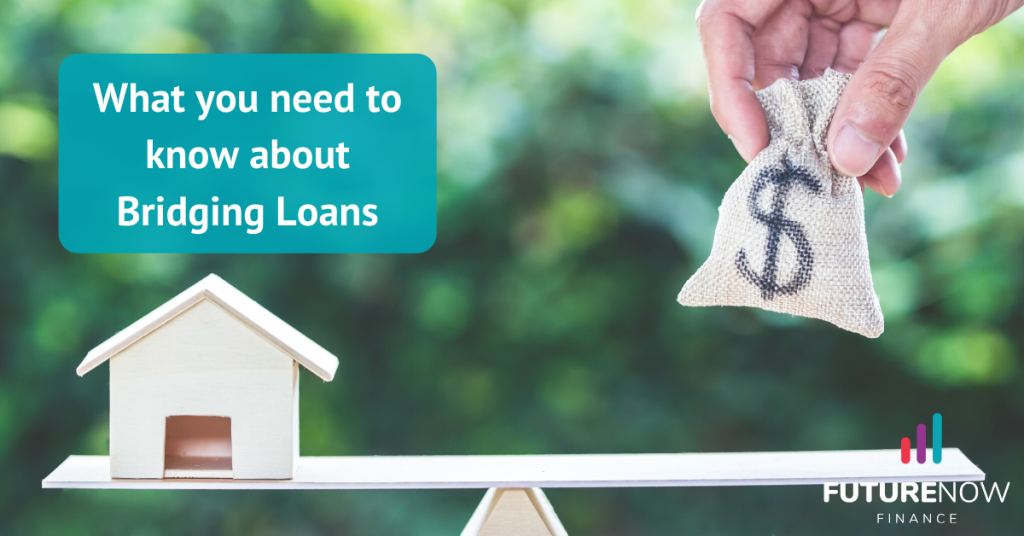Selling your current home and buying a new property at the same time can be tricky to navigate. You can’t precisely pinpoint when your existing property will sell, and this might leave you without the returns you need to purchase a new home. If you’re in this situation, you may have heard of the term “bridging finance”.
What is a bridging loan?
A bridging loan applies to homeowners who require finance to purchase a second property with the intention of selling their current one. This type of loan is typically an interest-only payment home loan where buyers are only required to pay the interest on the loan for a set period. The size of the bridging loan is calculated as such:
Value of new home + Existing mortgage – Approximate sale price of current home
The remaining amount is viewed as your Ongoing Balance or End Debt, which becomes the principal of your bridging loan. Lenders will evaluate your repayment capacity based on this End Debt. Lenders will use both properties as collateral and you will have one loan that covers the existing mortgage and the new purchase, also known as the Peak Debt.
During the time between the disbursement of your bridging loan and the sale of your existing property, you’ll only need to make Principal and Interest (P&I) repayments on your current mortgage as opposed to juggling the repayments of two separate home loans. Once your first property is sold, you can continue to make regular mortgage repayments on the new loan, which includes the interest of the bridging loan.
Should you use a bridging loan?
According to Mortgage Choice, there are two key reasons why you should take out a bridging loan:
- Interest capitalisation
If you aren’t able to meet the repayments on both properties, then a bridging loan with interest capitalisation might be a suitable option for you. It will allow you some buffer time while you wait for your existing property to sell.
2. 100% loan on the new property
A bridging loan permits you to borrow the full amount of the purchase price of your new property, plus other accompanying costs. This might benefit you especially if you aren’t currently able to afford the new property but will be able to once you have sold off your existing property.
Pros and cons of a bridging loan
It’s important that you research and understand the pros and cons that come with a bridging loan before deciding if this is the right move for you.
Pros:
- You can purchase your new property sooner
If you see something that checks all the boxes, a bridging loan allows you to secure a new home without having to wait until your current one sells.
- You don’t have to rush to sell your existing property
If you are on time pressure to sell your existing home, you may miss out on a good deal than if you had time to weigh offers from prospective buyers.
- Avoid renting
You can avoid the inconvenience of moving twice and paying the costs to rent a home between the sale of your existing property and settlement of your new home.
- Unlimited P&I repayments
If you want to reduce your interest, you can opt to make as many repayments on the loan until you sell your property.
Cons:
- Compound interest
Interest on a bridging loan is usually charged monthly, which means that you will accrue more interest the longer it takes for you to sell your property.
- Interest rate
If you don’t sell your current property within the bridging loan period, you will be charged a higher interest rate.
- Two property valuations are required
Your existing property and your new property will need to be valued, and this will cost between $200 and $220 for each valuation.
- Termination fees
If your current finance provider does not offer a bridging loan, then you will need to find another lender that is willing to take on your existing mortgage and the bridging loan. This may result in termination fees from your current loan, especially if you are switching during a fixed interest rate period.
Some mindful tips!
Home Loan Experts recommends the following tips if you are considering a bridging loan:
- Use a reputable valuer and be realistic about how much you can sell your existing property.
- It is recommended that you have at least 50% equity in your existing property to avoid paying high interest.
- Consider the market situation and how it may affect property sales. Also, depending on your state, settlement can vary between six to eight weeks.
- It would help if you can make some repayments within the bridging loan period to reduce interest and overall peak debt.
- You should thoroughly review your financial standing, weigh the costs, and decide if a bridging loan is the solution for you. Consider using a finance broker who can help you make these decisions.
If you are looking to sell your existing home for a new property but don’t know where to start, the team at FutureNow Finance are here to help. We can help assess your current financial position and advise a solution that suits you. Call 1300 013 730 or email hello@futurenowfinance.com.au

